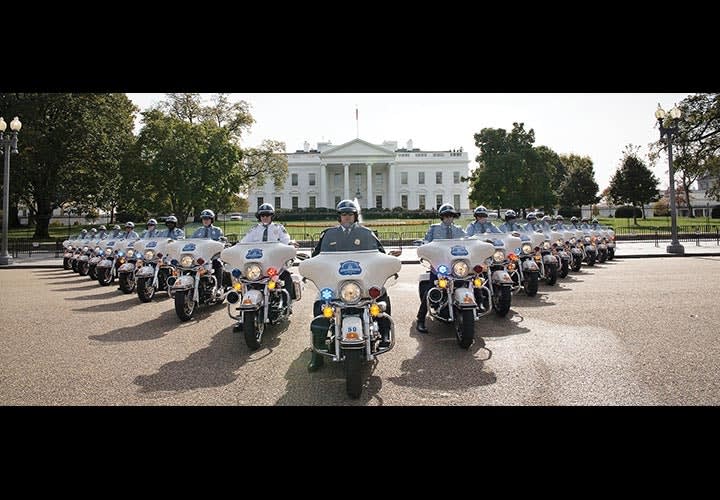And that can be a tall order when you're working long hours exposed to the blazing sun or the pouring rain. "Yes, we have set shifts, but there are days more often than not that we get held over on assignments," Glover says. Officers in his unit work 8.5 hours at least, on a morning or afternoon shift. Officers can never be sure when their shifts will end, especially when working major events.
For President Donald Trump's inauguration, escorts were needed for the incoming as well as the outgoing president and vice president, which required four separate details, each of which was quite taxing. "If you were part of Vice President Pence's detail, you followed every move he made," says Glover. "If you started at 5:00 a.m., and he didn't go to bed until 1:00 a.m., that's your day."
President Obama and Vice President Biden made time to take photos with the motor units before they left office. Glover was honored to do so, and appreciated that they were thanking him for his dedication to his job. "Politics aside, it's the president of the United States, the office, it's what it represents," says Glover. "We don't take that for granted. It's an awesome feeling."
Once motor officers join the unit, they tend to stick around, for 10 to 12 years on average. And it's not uncommon for those who transfer out because of promotions to come back at higher ranks and stay until retirement. They must love what they do.
"Perhaps only the mounted officers get this same type of reaction with their horses, but everybody loves a police motorcycle," says Glover. "I've met so many wonderful people doing this job. It's very unique, and we're honored to do this in the nation's capital."













